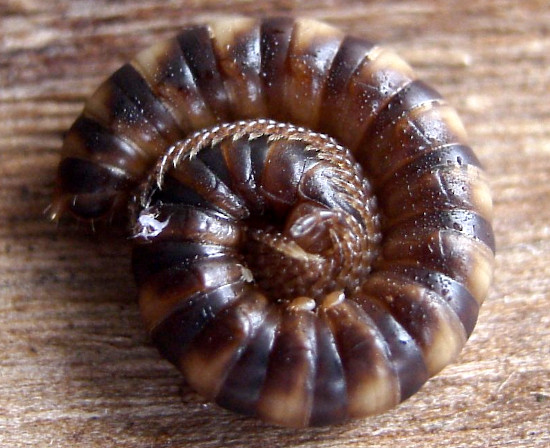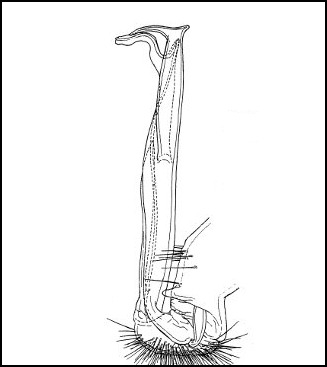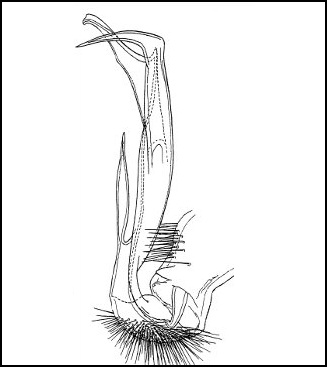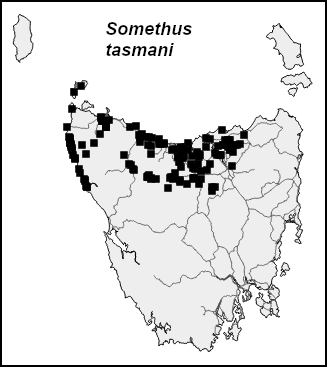Polydesmida: Paradoxosomatidae: Somethus

Somethus tasmani Jeekel, 2006
There are only two Tasmanian Somethus species, both endemic, but there are numerous species (mainly undescribed) in New South Wales, Victoria and South Australia. The genus is currently classified in subfamily Australiosomatinae, tribe Australiosomatini.
In Tasmania, Somethus species are ca 25 mm long and dark chestnut brown when mature, but juvenile stadia and young adults are light tan, as shown below. The individual in the top image is transitioning from tan to dark brown. Both Tasmanian Somethus species can be found in leaf litter and under bark, logs and stones.

Somethus tasmani, showing colour variation in adult instar. Adults grow progressively darker as they age.
The gonopod drawings below are modified from illustrations by C.A.W. Jeekel and show the right gonopod in medial view.
Somethus mesibovi Jeekel, 2006
In wet forest and scrub in the far Northwest and on King Island and the Hunter Group. Overlaps broadly with S. tasmani, but the two species have not yet been found in the same patch of forest. Abundant in eucalypt and pine plantations.


Somethus tasmani Jeekel, 2006
This species is Tasmania's most ecologically tolerant polydesmidan. It occurs in eucalypt and pine plantations, coastal dune scrub, closed tea-tree and swamp forest, eucalypt woodland, dry eucalypt forest, wet eucalypt forest and oldgrowth rainforest from sea level to at least 800 m. It is one of the few Tasmanian polydesmidans found on sandy coastal soils. Although the two Tasmanian Somethus species overlap in range, they have not yet been found to occur in the same habitat patch.


